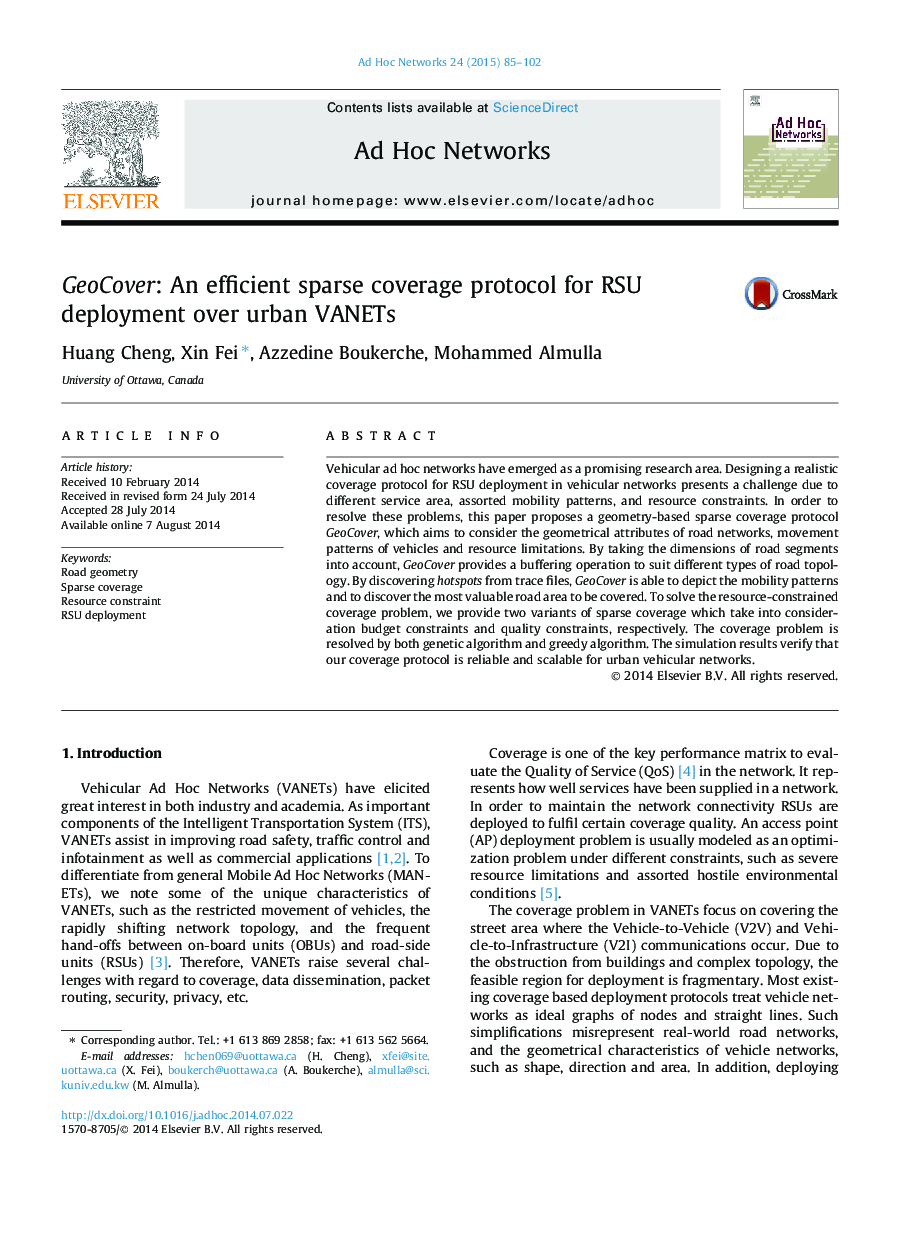| Article ID | Journal | Published Year | Pages | File Type |
|---|---|---|---|---|
| 445700 | Ad Hoc Networks | 2015 | 18 Pages |
Vehicular ad hoc networks have emerged as a promising research area. Designing a realistic coverage protocol for RSU deployment in vehicular networks presents a challenge due to different service area, assorted mobility patterns, and resource constraints. In order to resolve these problems, this paper proposes a geometry-based sparse coverage protocol GeoCover, which aims to consider the geometrical attributes of road networks, movement patterns of vehicles and resource limitations. By taking the dimensions of road segments into account, GeoCover provides a buffering operation to suit different types of road topology. By discovering hotspots from trace files, GeoCover is able to depict the mobility patterns and to discover the most valuable road area to be covered. To solve the resource-constrained coverage problem, we provide two variants of sparse coverage which take into consideration budget constraints and quality constraints, respectively. The coverage problem is resolved by both genetic algorithm and greedy algorithm. The simulation results verify that our coverage protocol is reliable and scalable for urban vehicular networks.
